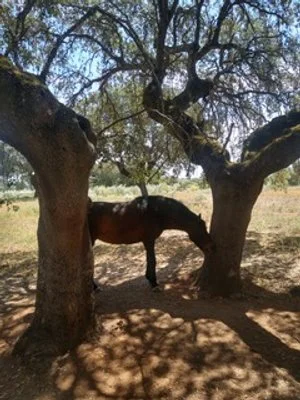International context
In December 2022, chaired by China and hosted by Canada, the Parties to the Convention on Biological Diversity reached agreement on the Kunming-Montreal Global Biodiversity Framework an ambitious set of commitments aimed at halting and reversing biodiversity loss and the accelerating rate of species extinctions now thought to threaten 1 million species. This Framework commits its signatory parties to 4 long term Goals on biodiversity and 23 Targets on actions to be taken, both by 2030 and by 2050.
The Mission of the Framework is –
“To take urgent action to halt and reverse biodiversity loss to put nature on a path to recovery for the benefit of people and planet by conserving and sustainably using biodiversity, and ensuring the fair and equitable sharing of benefits from the use of genetic resources, while providing the necessary means of implementation.”
Examples of the Targets agreed to by signatory parties to the Framework are (Targets 1-4 summarised – Target 7 quoted in full)–
Target 1 Biodiversity areas to be managed so as to bring losses of areas of high ecological integrity close to zero by 2030.
Target 2 By 2030, at least 30% of areas of degraded terrestrial, inland water and coastal and marine ecosystems are under effective restoration.
Target 3 Conservation of 30% of terrestrial, inland water, coastal and marine areas especially areas of importance for biodiversity.
Target 4 Urgent action to halt human induced extinctions of threatened species and recovery and conservation of species….
Target 7 “Reduce pollution risks and the negative impact of pollution from all sources by 2030, to levels that are not harmful to biodiversity and ecosystem functions and services, considering cumulative effects, including: (a) by reducing excess nutrients lost to the environment by at least half, including through more efficient nutrient cycling and use; (b) by reducing the overall risk from pesticides and highly hazardous chemicals by at least half, including through integrated pest management, based on science, taking into account food security and livelihoods; and (c) by preventing, reducing, and working towards eliminating plastic pollution.”
The Global Biodiversity Framework is the essential reference point and measure for judging countries’ commitment to implementing its obligations in their national laws. It is not a wish list put together by environmental groups. It is the considered judgment of 188 governments and countries on what actually needs to be done to restore nature, protect habitats and to halt species losses and mass extinctions. It is really therefore the best measure of whether countries and their national laws actually mean what they say about nature restoration. One of the first comprehensive attempts at a Nature Restoration Law is being taken forward by the European Union.
EU Nature Restoration Law
The European Commission’s proposal for an EU Nature Restoration Law described it as a key element of the EU Biodiversity Strategy, which calls for “binding targets to restore degraded ecosystems, in particular those with the most potential to capture and store carbon and to prevent and reduce the impact of natural disasters.”
The Commission noted that “Europe’s nature is in alarming decline, with more than 80% of habitats in poor condition”. Restoring wetlands, rivers, forests, grasslands, marine ecosystems and the species they host would help –
“increase biodiversity
secure the things nature does for free, like cleaning our water and air, pollinating crops, and protecting us from floods
limit global warming to 1.5oC
build up Europe’s resilience and strategic autonomy, preventing natural disasters and reducing risks to food security.”
The original Commission proposal “combines an overarching restoration objective for the long-term recovery of nature in the EU’s land and sea areas with binding restoration targets for specific habitats and species. These measures should cover at least 20% of the EU’s land and sea areas by 2030, and ultimately all ecosystems in need of restoration by 2050.”
“The proposal contains the following specific targets:
targets based on existing legislation (for wetlands, forests, grasslands, river and lakes, heath & scrub, rocky habitats and dunes) - improving and re-establishing biodiverse habitats on a large scale, and bringing back species populations by improving and enlarging their habitats
pollinating insects – reversing the decline of pollinator populations by 2030, and achieving an increasing trend for pollinator populations, with a methodology for regular monitoring of pollinators
forest ecosystems – achieving an increasing trend for standing and lying deadwood, uneven aged forests, forest connectivity, abundance of common forest birds and stock of organic carbon
urban ecosystems – no net loss of green urban space by 2030, and an increase in the total area covered by green urban space by 2040 and 2050
agricultural ecosystems – increasing grassland butterflies and farmland birds, the stock of organic carbon in cropland mineral soils, and the share of agricultural land with high-diversity landscape features; restoring drained peatlands under agricultural use
marine ecosystems – restoring marine habitats such as seagrass beds or sediment bottoms that deliver significant benefits, including for climate change mitigation, and restoring the habitats of iconic marine species such as dolphins and porpoises, sharks and seabirds.
river connectivity – identifying and removing barriers that prevent the connectivity of surface waters, so that at least 25 000 km of rivers are restored to a free-flowing state by 2030”.
These measures would be included in individual EU Member States’ National Restoration Plans, which would be reported to the Commission, and publicly scrutinised, along with plans for monitoring and progress towards the targets.
Political debate
The EU Nature Restoration Law was framed by the European Commission as a key part of both its EU Biodiversity Strategy and its EU Green Deal, a package of measures to address biodiversity loss alongside climate change. It was also framed in part as a response to the EU’s international obligations.
Nevertheless, the EU Nature Restoration Law promptly ran in to ferocious political opposition, and very determined efforts were made to kill of the legislation altogether. The measure was deadlocked in three committees of the European Parliament. It was subject to 2,300 amendments, and significantly weakened and reduced in scope, both in terms of firm commitments to ensure no deterioration of ecosystems, and in several key impacts of the measure on agriculture and farming.
Eventually on 12 July 2023 it went to the plenary session of the European Parliament for a vote, where it narrowly survived, with 336 votes in favour, 300 against and 13 abstentions.
Opposition to the measure was led by the conservative European People Party EPP political grouping, led by Manfred Weber, who claimed that it would take agricultural land out of production and damage food security. The EPP was supported by powerful lobbying interests for large scale agri-business, such as the COPA-COGECA agricultural lobby group and Europeche fisheries group, by some far right interests, and by Members of the European Parliament from the Netherlands, Italy, Sweden, Finland and Belgium.
Support for the law was led by EU Commissioner Frans Timmermans, with Members of the European Parliament from Socialist, Democrats and Green groupings and countries including Spain. Representatives of some big businesses such as Nestle, Coca-Cola and Unilever spoke up for the law, an Executive member of the European Central Bank said “Destroy nature and you destroy the economy”, and 6,000 scientists from universities across Europe also weighed in in support of the law, as did Greta Thunberg, facing off against that regular feature of Strasbourg protests, angry farmers in tractors.
The law in its somewhat reduced form now remains to be further negotiated between the European Commission, European Parliament and European Council of Ministers. The nature of the debate has become hostile and politicised to a surprising and regrettable extent, given the strong international support as recently as December 2022 for the Global Biodiversity Framework. Advocates of better protection of biodiversity have had to work really hard to make their case, in the teeth of well funded and determined political opposition from entrenched interests. So far, just about, they have held their ground.

